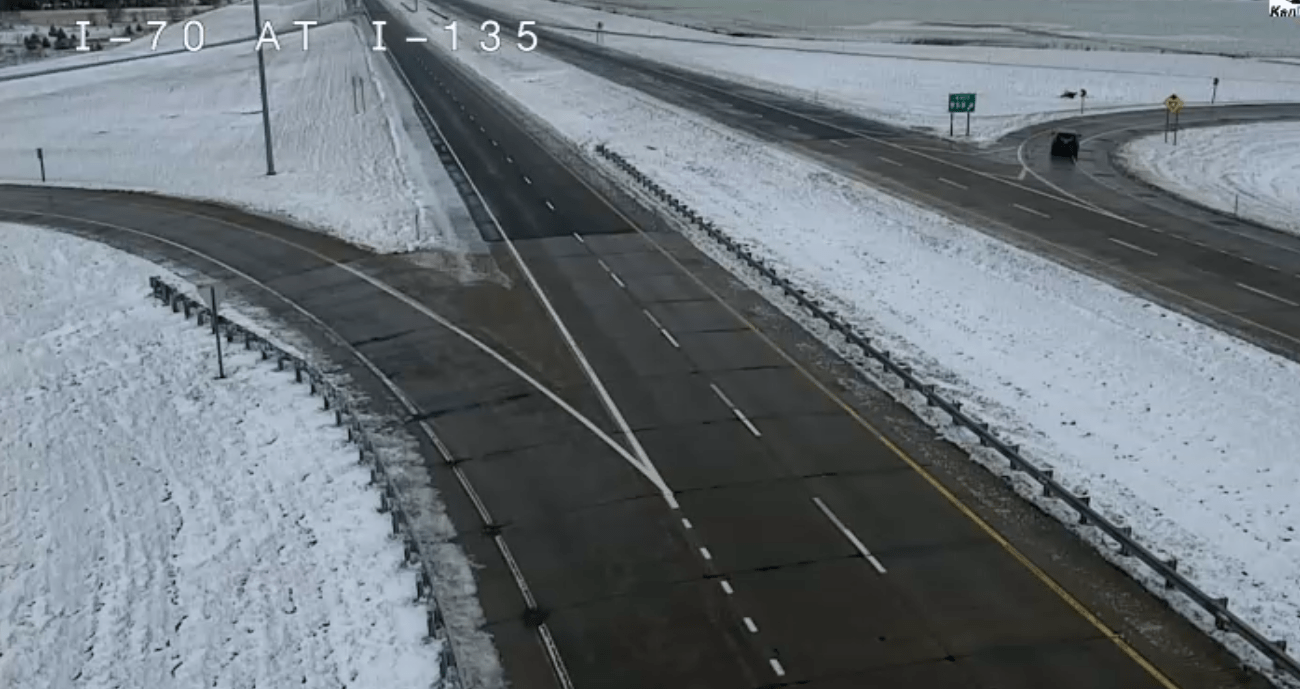One winter storm moved through Kansas on Friday, and another storm is expected to bring more rain and snow to the state, along with gusty winds, beginning late Monday.
AAA Kansas is urging drivers to be ready for winter conditions and to remain cautious when snow and ice are on the roadways. AAA crews are expecting an increase in emergency roadside service calls with the wintry conditions. The main problems have been slide-offs and crashes due to slick roads, battery and non-start problems and flat tires. Last winter, AAA Kansas crews helped more than 34,000 motorists across the state.
AAA said drivers can take several steps before a storm moves in:
-
Make certain your tires have good tread for adequate traction and are properly inflated. For every 10-degree drop in temperature, tires can lose 1 pound of air pressure.
-
Have the battery checked by a professional to ensure it is strong enough to face cold weather. When the air temperature is 32 degrees, a battery’s starting power drops 35 percent. Also, the average lifespan of a car battery is 3-5 years. AAA members can request a visit from a AAA mobile battery service technician who will test their battery and replace it on-site, if necessary.
-
Keep your gas tank at least half-full to avoid gas line freeze-up.
-
Ensure that windshield wiper blades are in good condition and the wiper fluid reservoir is full. A winter blend of wiper fluid that resists freezing is recommended.
-
Make sure all lights (headlights, tail and brake lights, turn signals) are working properly so you can see and be seen in bad weather conditions.
There are also tips for driving in snowy and icy conditions:
-
Stay home. If you really don’t have to go out, don’t. Even if you can drive well in winter conditions, not everyone else can. Don’t tempt fate. Stay home until crews can properly clear roadways.
-
Check road conditions. Before you leave, assess the conditions of roads along your route. A good source for this is the Kansas Department of Transportation’s KanDrive site, found at http://www.kandrive.gov
-
Drive slowly. Everything takes longer on ice- and snow-covered roads. Accelerating, stopping, turning – give yourself time to maneuver by driving slowly.
-
Accelerate and decelerate slowly. Apply the gas slowly to regain traction and avoid skids. Don’t try to get moving in a hurry and take time to slow down for a stoplight. Remember: It takes longer to slow down on icy roads.
-
Manage a skid. If you lose traction and begin to spin or skid on snow or ice, don’t slam on the brakes. Steer in the direction you want the front of the vehicle to go, until your tires regain traction.
-
Increase your following distance to eight to ten seconds. This increased margin of safety will provide the longer distance needed if you have to stop.
-
Know your brakes. Whether you have antilock brakes or not, keep the heel of your foot on the floor and use the ball of your foot to apply firm, steady pressure on the brake pedal.
-
Don’t stop if you can avoid it. There’s a big difference in the amount of inertia it takes to start moving from a full stop versus how much it takes to get moving while still rolling. If you can slow down enough to keep rolling until a traffic light changes, do it.
-
Don’t power up hills. Applying extra gas on snow-covered roads just starts your wheels spinning. Try to get a little inertia going before you reach the hill and let that inertia carry you to the top. As you reach the crest of the hill, reduce your speed and proceed downhill slowly.
-
Don’t stop going up a hill. There’s nothing worse than trying to get moving up a hill on an icy road. Get some inertia going on a flat roadway before you take on the hill.
AAA also has a list of items that drivers should have in their vehicles to be ready for winter travel:
-
Bag of abrasive materials such as sand, salt or cat litter for gaining traction in snow/ice
-
Snow shovel
-
Flashlight
-
Winter coat, hat and gloves or mittens
-
Ice scraper and snow brush
-
Jumper cables
-
Blanket or sleeping bag
-
Warning flare or triangles
-
Cellular phone and emergency charger
-
Food and water
-
First aid kit
-
AAA membership card or number if you need to call for roadside assistance.








